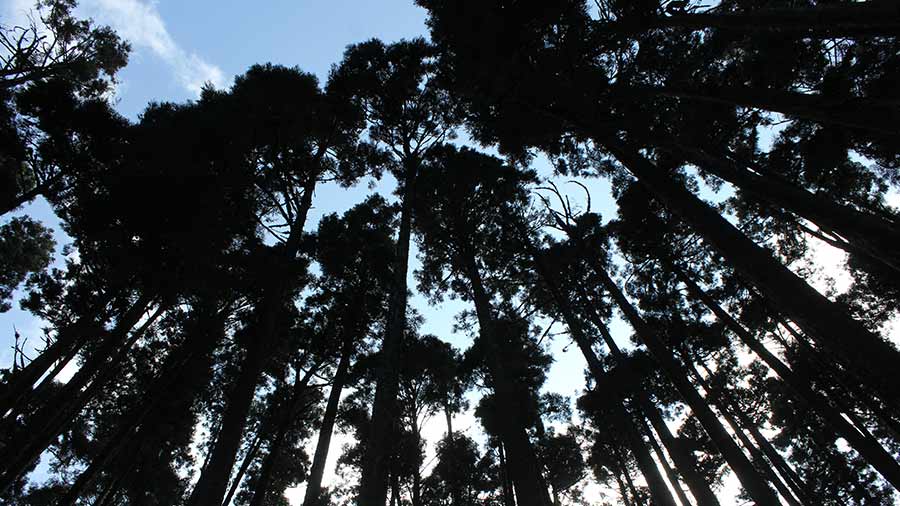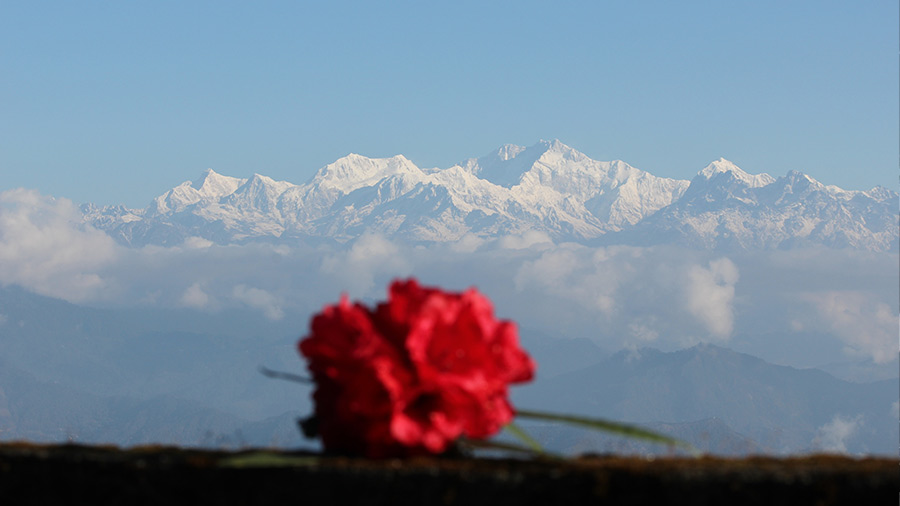The space between 3 and 4 in the morning is called the devil’s hour in the Western Christian tradition. It is a time of sin, the inversion of 3 and 4 in the afternoon when Jesus finally died on the cross and the whole humankind found salvation at one go. Between 3 and 4 in the morning, demons roam the land, witches fly through the sky and wicked scholars sit in front of their laptops for inspiration. I have been waking up at this hour with a cold sweat for more than 60 days now. In the beginning, I would read a book and fall asleep after a while or at least with the break of dawn. Nowadays, I don’t even try to stay in bed.
“Didn’t I tell you not to work this weekend?” I hear my friend’s groggy voice from under the blanket next to my bed. “Your mountain is a quack, I still can’t write.” “You know what that is?” a hand comes out of the blanket and points at my open laptop on the table. “My Virgil through Inferno?” I take a stab at the question. “No, that’s a writer’s block, literally, and you brought it with you from the plains. Get rid of it and get ready for the sunrise. You will see paradise yet.”
At 4.15, PB (Parimal Bhattacharya) knocked on our door. My friend had discovered a tear on the sole of his shoe a moment before and we were figuring out if the Earth and the sun gods are in cahoots to make his trip difficult. “It is just the mountain testing me,” he declared confidently and when none of the shoes in our host’s house fit him, he bravely marched out with the rest of us in an old chappal, the rest of him wrapped in synthetic fleece.
The light of dawn had just begun to tint the sky a timid blue. We walked along Lebong Cart Road towards the east and then climbed a steep chor bato to find Love Road waiting for us. A winding walkthrough, carved on the side of Birch Hill, Love Road or the Lovers’ Road is a 3km-long path stretching from the Ropeway station at Singamari to the Tibetan Refugee Centre at Lebong. Parimal sir had chosen it for us as an alternative to the Tiger Hill summit — the most popular mountain observatory in Darjeeling — where each day the rising sun is greeted with loud cheers of restless tourists and their squabbles over the perfect spot. Like the puja in Sreebhumi, the crowd of Tiger Hill is as much a spectacle as the mountains, Sir told us, and he wouldn’t dream of marring our trip with a visit to that place.

Kanchenjunga, just after sunrise Sagnik Yadaw
So we were here, on a walkway too narrow for any concrete paver and no tourist in sight, walking along the hill to see the Sleeping Buddha dream in golden light. My friend was the one to get the first view — “Sagnik-da, there!” Parimal sir and I looked back to see him standing with his hands clasped, mesmerised by what I later understood to be the memory of his first view. Following his gaze gifted us a slice of stony white Kanchenjunga before a blue canvas, sandwiched between a concrete building decorated with tiles and a thick row of tall trees. His excitement was contagious but the mountain did not offer me anything.

Another view of the sunrise Sagnik Yadaw
Surprising me, PB took a photo on his phone. “Do you know those trees?” he was pointing at one of the conifers on our right that flanked the mountain peak. Both my friend and I shook our heads. Botany was not my strong suit. I still had problems differentiating jeera and ajwain. “Cryptomeria Japonica,” Ma’am said from behind us. I had heard the name before from Sir. Cryptomeria pines, imported from Japan to the hills by the green-fingered long arms of British colonialism; a monoculture plantation disaster that has wrought a silent havoc on the biodiversity of this place. Locally known as Dhupi, these were mass planted for their use in the railroad and tea garden industry and are now a staple part of Darjeeling’s beauty. For the British, the tourists, and even for the hills, they make little difference, holding the soil, the economy and the natural aesthetic with a strong grip, yet their plantation killed much of the local natural undergrowth vegetation and pushed away the local people who could neither use their wood for fuel or fodder. Later, the government limited the number of these trees but the damage had been done silently for centuries and it was felt only by those under the shade of the giants.

Dhupi trees — mass planted for their use in the railroad and tea garden industry and are now a staple part of Darjeeling’s beauty Sumit Roy
“Oh!” my friend said, “these trees were imported, right?” “As were these,” PB was looking at the house now. “This is probably an encroached area and look at these tiles. Granite. Hardly indigenous, maybe from somewhere as far as Rajasthan, coming to showcase this homeowner’s sudden affluence in the community. They do nothing for the soil integrity of the place but their use here and throughout the town is indispensable for people living an urban life, not to mention the comfort of the tourists like us.”
Sir went on, playfully trying to imagine the life of that homeowner who had decided to renovate his cottage. I found myself a bit distracted by the view. Looking at our sentries, I wondered what the mountain was seeing right now — a slice of a hill with a group of outsiders atop it between an alien rock and an alien tree. “Darjeeling’s present is still blocking our view,” I heard Sir telling the group. “We’ll have to walk a little more to see the past.”
After around 10 minutes of slow walk from the Ropeway station, the tiled and the shanty houses began to disappear. To me, whose only experience of wilderness has been getting lost on my university campus while trying to take a shortcut through the trees, it really did feel like we were inside a forest now. We had picked up a friend on the way, a four-legged white stray dog with black spots who had taken an immediate liking to us, strengthened even more by the headpats and the biscuits we had shared. Now like Dharma in the Mahabharata, he was leading our way on an inclined slope, sniffing the ground and chewing on random tufts of grass here and there with a look of sober consideration. On his heels was Sarbani-di, who had a soft spot for dogs, and then the rest of the group, finally followed by Indrani ma’am and me.

‘Like Dharma in the Mahabharata, he was leading our way on an inclined slope, sniffing the ground and chewing on random tufts of grass here and there’ Sagnik Yadaw
Walking with Ma’am here was like walking with a Google lens. She had a name for everything that we had passed, from birds to flowers and leaves. “The red ones are rhododendrons, and see the pink ones in clusters, those are magnolia, and these are silver ferns. You can see the silvery glaze from this angle, hence the name.” So many names, indeed. Names to recognise, to understand, to come back to. The verdant hill was being picked apart in front of my very eyes, clusters becoming individuals or parts with their own history, life cycle, their roots entangled somewhere under this hard rock. Whatever we are to them, what trigger, stimuli, friend, foe, masters, and slaves — do they give us thought, I wondered. Are we there somewhere in those electric words between ‘danger’ and ‘protect’ that have reverberated through this ground before we even had feet to walk on. After all, what are six pairs of footsteps on a single morning when your sense of time is broken into seasons and day and night into breaths? Pesky little crawling things moving too soon with the wind of time but countless in number, a danger, an epidemic to the old forest.
“Indrani! Indrani!” Sir was quietly hissing at us from afar, his head straight, but his fingers pointing to a vine above on his left. “A sunbird,” he mouthed the word. I took time to find the little ball of fluff so far above us — a yellow-breasted round thing with curved beak that looked as thin as a needle and a small red tail. “The tails are usually bigger,” Ma’am said, “these are fire-tailed sunbirds.” Fire-tailed, like a phoenix, I couldn’t help but laugh, I had never seen a cuter thing with such a grand name before.
The sunbird gave a little chirp and jumped onto a green pipe that had passed through the leaves of the tree in front of us to move downwards to the left beyond our view. There was a tear in the pipe and a tiny spritz of water coming from it which he… or is it she?... which they began using for what was clearly a meticulous morning ablution. “Those pipes bring harvested rainwater to the town, you will see hundreds of those on these hills,” Ma’am said. “Well, he just used up my water, I’m not showering today,” Subhendu-da declared without looking at Sarbani-di. “You know sunbathing is technically a bath and we’ll have enough of that soon,” I responded in tow. In times of trouble, one should always stand up for a kindred spirit.
(To be continued tomorrow)

